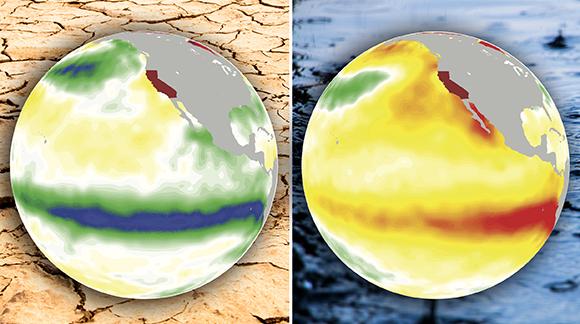More frequent droughts and floods likely in California later this century
In the future, the Pacific Ocean's temperature cycles could disrupt more than just December fishing. Known collectively as the El Niño Southern Oscillation, or ENSO, the changing seasonal phenomena known as El Niño and La Niña could lead to at least a doubling of extreme droughts and floods in California later this century.

California is experiencing one of the most severe droughts in its history, but it's not clear if a warmer world will make droughts worse, more frequent, or perhaps even improve the situation. After all, warmer air can hold more water, and some research suggests global warming could increase California's average rain and snowfall.
Published in Nature Communications, the study shows more frequent extreme events including both extremely dry and wet events are likely to occur. Other research shows the Golden State's average precipitation increasing gradually, but not enough to account for the occurrence of extreme events. A better understanding of what gives rise to ENSO might help California predict and prepare for more frequent droughts and floods in the coming century.
This study utilizes both multi-ensembles of a single model: Community Earth System Model (CESM) and multi-models in the Coupled Model Intercomparison Project phase 5 (CMIP5) archive. To explore El Niño's connection to California precipitation, the researchers ran a climate model with and without El Niño. In two simulations, they ramped up the concentration of carbon dioxide by 1 percent every year for 150 years. In just one of the runs, they removed El Niño's cyclical contribution by programming the sea surface temperatures to reflect only steady warming. Without El Niño and La Niña feeding into the climate model, the frequency of extreme precipitation in California stayed constant for the simulation's century and a half. With ENSO's ocean feedbacks, California experienced wide swings in rainfall by the end of the simulated period.
Increasing water cycle extremes in California and relation to ENSO cycle under global warming (Nature Communications)
1Pacific Northwest National Laboratory
2Utah State University
Topics
- Pacific Ocean
- ENSO
- Extreme Events
